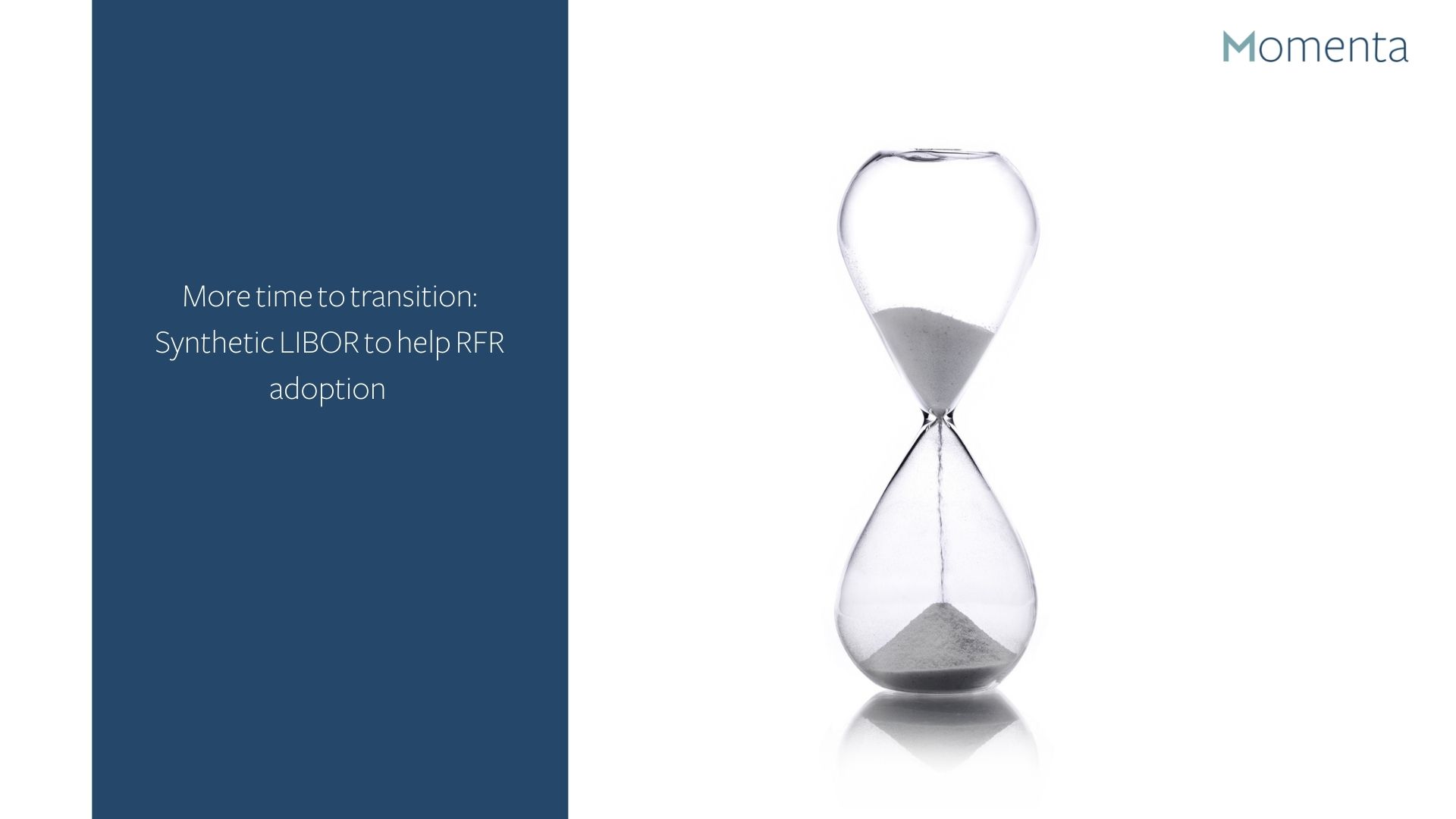More time to transition: Synthetic LIBOR to help RFR adoption
The FCA recently confirmed rules for legacy use of synthetic LIBOR rates which can be used for a limited period in certain contracts, following the demise of LIBOR.
Most contracts that use LIBOR have already been switched to new risk-free-rate or are in the process of doing so, prior to the 2021 December cessation deadline.
Why has the FCA approved the use of synthetic LIBOR for certain contracts?
Market disruption could result for the contracts such as bonds, mortgages and loans that have not been able to, and crucially will not be able, to be transitioned before the deadline.
This is one of the main reasons for the use of synthetic LIBOR. The FCA is requiring the publication of 1, 3, and 6-month LIBOR rates for sterling and Japanese yen on a synthetic basis until the end of 2022, to allow more time for transition to be completed[1].
Customer fairness is key
One of the biggest risks associated with the whole transition process, is the impact that new ARR will have on interest rates, placing many customers at risk of increased charges. Regulators will be keeping a close eye on how the sector has treated customers, with a sharp focus of course on the requirement to treat customers fairly – namely, a combination of evidence that the institution has evidence of contacting the customer and making them aware of any change and how this will or may have an impact on them financially.
If interest rates are changed and the customer is impacted negatively, contract negotiators will unquestionably need to be onboarded to ensure a fair outcome is reached.
Tough legacy contracts pose even more risk around this area. In terms of loan contacts, syndicated and bilateral loans have been the most difficult to transition. They may fall back to individual lender cost of funds, which pose many challenges – simply put, it becomes very difficult to calculate, including the difficulty of calculating the relevant cost to the lender of a particular loan [2].
Next steps?
The FCA has recently stated that sterling LIBOR will not be allowed to be used in most new contracts that are developed after the December 2021 cessation deadline.
Five US dollar LIBOR settings will still be calculated by panel bank submission until the end of June 2023. This move has been supported not only by the FCA, but also the US regulators, as well as their global counterparts.
Synthetic LIBOR has been developed to lessen the transitional risk, giving many financial products a better opportunity for RFR adoption. Regardless of this development, transitional efforts will still need to be completed on-time, and in accordance with all regulatory requirements.
[1] FCA. (2021). FCA confirms rules for legacy use of synthetic LIBOR rates and no new use of US dollar LIBOR. [online] Available at: https://www.fca.org.uk/news/press-releases/fca-confirms-rules-legacy-use-synthetic-libor-no-new-use-us-dollar-libor [Accessed 18 Nov. 2021].
[2] www.linklaters.com. (2020). Libor transition – tough legacy contracts | Publications | Insights | Linklaters. [online] Available at: https://www.linklaters.com/en/insights/publications/2020/june/libor-transition-tough-legacy-contracts [Accessed 16 Nov. 2021].

